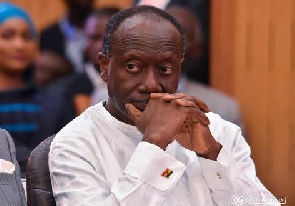Managers of ESLA Plc, the special purpose vehicle created to raise bonds to clear the GH¢10billion energy sector debt, have said they have the systems, structures and capacity to raise some of the debt from offshore investors who are unable to buy cedi-denominated bonds.
Edward Effah, Chairman of the Board of Fidelity Bank, noted that since the bond issuance is a programme that allows managers to come into the market when conditions are right, they can even extend it to offshore investors – primarily in the United States.
“We can go there if conditions are right and we believe we can get better rates. We have the capacity, systems and structures to raise such a bond from offshore investors, especially those who cannot directly buy cedi-denominated bonds,” he explained.
Fidelity Bank is managing the bond together with Standard Chartered Bank, and Mr. Effah with his team debunked arguments that the issuance was a failure, saying there is no end to the number of times they can go onto the market to raise the debt within the five-year period.
He told a press conference that based on existing model assumptions on current cash flow projections and required coverage ratios, the programme allows ESLA Plc to issue up to GH¢6billion.
“Being a programme allows the issuer the flexibility to draw down more in the future up to the GH¢6billion – either via a retap of the existing 7- and 10-year bonds or issue of new bonds to ensure cost and issuance efficiency,” an explanatory statement to the media added.
Pricing efficiency led to 85 percent success rate
Mr. Effah explained that due to pursuing the best price for the bond, the issuance achieved an 85 percent success rate. “People subscribed at a price we didn’t want. It meant that people subscribed but bid at a higher price, and so we had to reject those bids,” he added.
The seven-year bond, currently trading on the Ghana Stock Exchange (GSE), was oversubscribed at GH¢2.5bilion, above the target of GH¢2.4billion, at an interest rate of 19 percent.
The 10-year bond closed with a total bid of GH¢2.79billion relative to the target of GH¢3.6billion. Out of this, GH¢2.29billion was accepted at a price of 19.5 percent.
This brings the overall number of bids to GH¢5.32billion – and out of that ELSA Plc chose to close the books at GH¢4.7billion, representing 78 percent of the targetted amount.
Mr. Effah emphasised that the bonds do not carry a government guarantee but rather utilises the Energy Debt Recovery Levy flows, a subset of the ESLA levies, to support debt repayment.
He added that flows from this levy amounted to approximately GH¢1.28billion per annum in 2016, and is expected to grow.
“This landmark transaction sets a precedent in sub-Saharan Africa for public sector/State-Owned Enterprises (SOEs) debt restructuring, and provides a clear and structured framework for the resolution of legacy debts owed by SOEs within Ghana’s energy sector,” he added.
He further noted that this initiative will help resolve the high levels of non-performing loans within the banking sector, and provide liquidity to the banks that allows them to support the private sector and provide credit to businesses.
“It will also help create a more efficient energy sector, bringing energy prices down as the sector becomes more efficient and competitive, to the benefit of the Ghanaian consumer,” he added.
Business News of Monday, 13 November 2017
Source: thebftonline.com

















